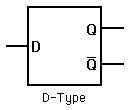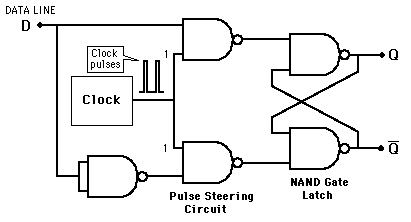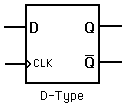The D Flip-Flop
 |
The D flip-flop tracks the input, making transitions with match those of the input D. The D stands for "data"; this flip-flop stores the value that is on the data line. It can be thought of as a basic memory cell. A D flip-flop can be made from a set/reset flip-flop by tying the set to the reset through an inverter. The result may be clocked.
|
| Flip-Flops |
Electronics concepts
Digital circuits
Sequential Operations
| HyperPhysics*****Electricity and magnetism | R Nave |



